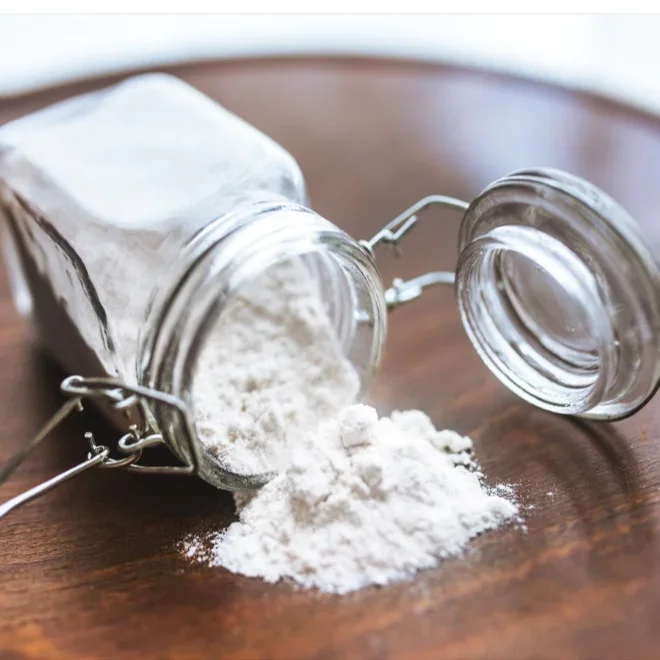The food industry is constantly evolving, with a focus on both innovation and safety. One such innovation is the use of food grade titanium dioxide (TiO2), a whitening agent that enhances the appearance of various food products. This blog post will explore the applications, benefits, and considerations associated with the use of food grade titanium dioxide in the food industry.
What is Food Grade Titanium Dioxide?
Titanium dioxide is a naturally occurring mineral that is chemically inert, insoluble, and non-toxic. When used in the food industry, it is classified as food grade, meaning it meets specific purity and safety standards. Food grade titanium dioxide is recognized as E171 by the European Union and is approved for use in many countries.

Properties of Food Grade Titanium Dioxide
1.Whiteness: It provides an intense white color, making it ideal for coloring food products.
2.Opacity: It has high opacity, which can mask the natural color of food items.
3.Stability: It is resistant to heat, light, and pH changes, ensuring consistent color throughout processing and storage.
Applications of Food Grade Titanium Dioxide
1.Confectionery and Bakery Products
Food grade titanium dioxide is widely used in the confectionery and bakery sector to achieve a bright white appearance in products such as icing, meringues, and sugar-coated confectionery.
2.Dairy Products
In dairy products like cheese, yogurt, and cream, titanium dioxide can be used to maintain a consistent white color, especially in products that are exposed to light, which can cause discoloration over time.
3.Beverages
Titanium dioxide is used in some powdered beverages and drink mixes to provide a bright white appearance and enhance visual appeal.
4.Sauces and Dressings
In sauces and salad dressings, it can be used to maintain a uniform color and prevent separation of ingredients.
5.Pharmaceuticals and Dietary Supplements
Although not a food product, it's worth mentioning that food grade titanium dioxide is also used in pharmaceuticals and dietary supplements for similar reasons, including the coating of pills and capsules.

Benefits of Using Food Grade Titanium Dioxide
1.Improved Aesthetics
The primary benefit of using food grade titanium dioxide is the enhancement of the visual appeal of food products, which can influence consumer perception and purchasing decisions.
2.Consistency
It helps maintain color consistency in food products, which is particularly important for brand recognition and consumer expectations.
3.Stability
The stability of titanium dioxide ensures that the color of food products remains unchanged throughout their shelf life, reducing the risk of spoilage due to color changes.
Regulatory Considerations and Safety
4.Regulatory Approval
Food grade titanium dioxide is subject to strict regulatory approval processes. Manufacturers must adhere to guidelines and limits set by regulatory bodies such as the FDA in the United States and the European Food Safety Authority (EFSA) in the European Union.
5.Safety Concerns
While generally recognized as safe, there have been ongoing debates and studies regarding the safety of nanoparticles of titanium dioxide, particularly when used in high concentrations or in products that may be ingested in large quantities.
6.Consumer Perception
Consumer perception plays a significant role in the acceptance of food additives, including titanium dioxide. Transparency and clear communication from manufacturers about the use and safety of food additives can help build consumer trust.
Innovations and Future Trends
1.Nanoparticle Technology
The development of nanoparticles of titanium dioxide has opened up new possibilities for its application in the food industry, including improved dispersion and reduced usage levels.
2.Alternative Additives
As the food industry moves towards more natural and clean label products, there is a growing interest in exploring alternative additives that can replace or complement titanium dioxide.
3.Sustainable Sourcing
Ensuring the sustainable sourcing of titanium dioxide is becoming increasingly important, with a focus on ethical mining practices and environmental impact.
4.Digital Color Measurement
The use of digital color measurement tools can help manufacturers optimize the use of titanium dioxide, ensuring consistent color while minimizing the amount needed.

Conclusion
Food grade titanium dioxide plays a vital role in the food industry, offering a range of benefits from improving aesthetics to ensuring color consistency and stability. While regulatory approval and safety considerations are paramount, ongoing research and innovation are driving the development of new applications and technologies. As consumer preferences and industry trends evolve, the responsible use of additives like titanium dioxide will continue to be a critical aspect of food product development.
Wuxi CHTI New Material Co., Ltd. was established in 2015, the main product is titanium dioxide. It is one of the CHTI sales companies and has established long-term and stable cooperative relations with other domestic factories. The main products are high-grade rutile, anatase, and titanium white enamel, and the extended products are vanadium and ferrous sulfate. Widely used in coatings, plastics, inks, paper, brake pads, enamel, welding materials, steel, metallurgy, sewage treatment, new energy batteries and other fields.
Welcome to inquiry if you need to know more about Food Grade Titanium Dioxide details or order wholesale.

